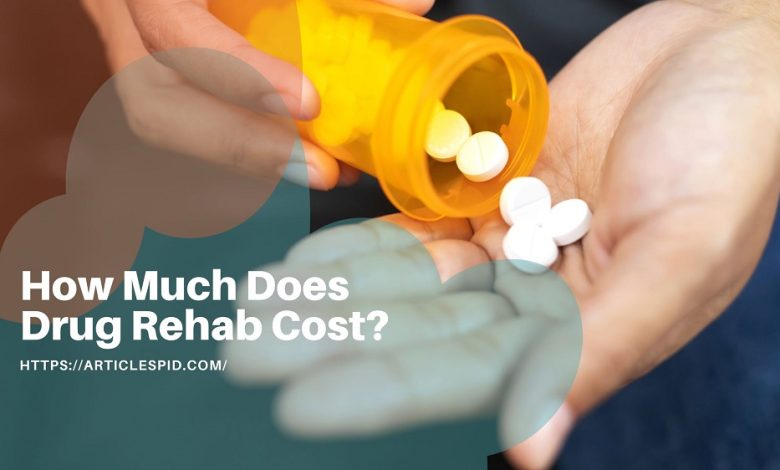
How Much Does Drug Rehab Cost?
The cost of drug rehab varies widely depending on the type of treatment you choose. Learn how to find the best rehab for your needs.
The struggle of overcoming drug addiction is an arduous one. Withdrawal symptoms, such as cravings and anxiety, make it hard for addicts to live a normal life. This leaves them with few options – seeking professional help or trying to deal with the withdrawal on their own. The cost of drug rehab can vary depending on the program you choose, but it’s usually not cheap. Keep reading to find out more about the average cost of drug rehab. And you will also know how you can work towards funding it.
The financial aid available for drug rehab
If you need help paying for your drug addiction treatment, there are organizations that may be able to assist you. If you have private health insurance or Medicare coverage for your addiction treatment, the payment will likely be covered fully or partially. Some employers offer insurance plans that cover employee’s addiction treatment expenses as well. If you don’t have health insurance or if your plan doesn’t cover addiction treatment expenses, there are government-funded organizations that may be able to help with your payment costs.
Two of the most well-known government organizations are the Substance Abuse and Mental Health Services Administration (SAMHSA) and the National Institute on Drug Abuse (NIDA).
The cost of drug rehab in your area
The average cost of drug rehab varies depending on where you live. For example, a 30-day residential facility in Pacific Bay Recovery costs $1,500. while a similar program in Florida costs $4,000 per month. You can also expect to pay more for addiction treatment programs located away from large cities. The average cost of a 30-day residential program in rural areas is $8,500, while the same program in urban areas costs $10,000.
How to fund your drug rehab
If you’re struggling to pay for your drug treatment, there are several ways you can come up with the money. You can use a credit card, but this will likely cause you more problems than it’s worth. You may also consider borrowing money from family members or friends. If they are willing to give you the money, make sure they understand that they will not be repaid until after you complete the program.
If you do decide to take out a loan, try getting a private loan instead of a bank loan. Private loans have lower interest rates and fewer fees than bank loans. If you need help finding a private lender, check out Lending Tree or Lending Club . These websites connect potential borrowers with multiple lenders who compete for your business and offer lower interest rates and fees as an incentive.
If you have no other options, you may be able to get a loan from a bank. Before you do, make sure the bank has a good reputation for providing small business loans. If possible, try to secure a business loan as opposed to an individual loan. Business loans are easier to qualify for and have more flexible repayment plans.
Related Article: Don’t Suffer From Bad Skin Any Longer With D.P drugs
Your health insurance and your drug rehab
If you receive health insurance through your employer or through Medicare, you should check to see if your health insurance covers addiction treatment costs. Most health insurance plans will cover some of the costs associated with drug rehab, but there are often limits on the amount that will be covered. For example, some employer-sponsored health insurance plans may only cover up to 30 days of inpatient treatment each year.
Point 1
In addition to checking your own health insurance plan for coverage of addiction treatment expenses, check with your spouse’s or partner’s employer for coverage as well. If both of you work and receive health insurance benefits from your employers, your health insurance may cover the entire cost of treatment.
Point 2
If your health insurance does not cover addiction treatment, you can still get help – you just have to pay for it yourself. The good news is that there are many drug rehab programs that offer sliding-scale payment plans. Or work with private lenders to provide financing for addiction treatment.
Point 3
If you live in the United States, it’s also possible to get coverage through Medicaid or Medicare if you qualify. For example, if you earn less than $1,963 per month ($23,726 per year), you could be eligible for Medicaid if you’re addicted to a prescription pain medication and meet other eligibility requirements. If your income is below 135% of the federal poverty level ($16,241 per year), you may be eligible for Medicaid without having an addiction diagnosis.
Point 4
In order to get started, fill out a Medicaid application online at Healthcare .gov . In addition to filling out this application, contact your local agency and ask about the application process.
Point 5
If you are an American citizen, you may also be able to get help through the Substance Abuse and Mental Health Services Administration (SAMHSA). SAMHSA provides a directory on their website of addiction treatment programs in your area that provide services at no cost to you.
Conclusion
If there is a drug rehab program near where you live that doesn’t charge for services, call them up and ask about their payment policies. If they offer payment assistance or a sliding-scale payment plan, this may be your best option for getting help with drug rehab costs if your health insurance doesn’t cover these expenses.



